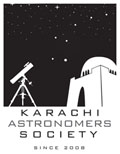Io Transit while Hunting Comets
Karachi Astronomy2021-01-08T11:47:36+00:00Last night (Nov 15, 2013) I was at KaAstrodome with Mehdi Hussain’s Skywatcher 7″ MCT. Objective was to hunt comets. Started with the testing of GoTo which was expected to be not functioning well. With the help of my Bino (15×70) I pointed laser on the Lovejoy and then Mehdi Hussain centred it in the MCT. We went to sleep before ISON. Oh I forgot. There was also an Io Transit, which was in plans. Io is the innermost of the four Galilean moons of the planet Jupiter and, with a diameter of 3,642 kilometres (2,263 mi), the fourth-largest moon [...]
